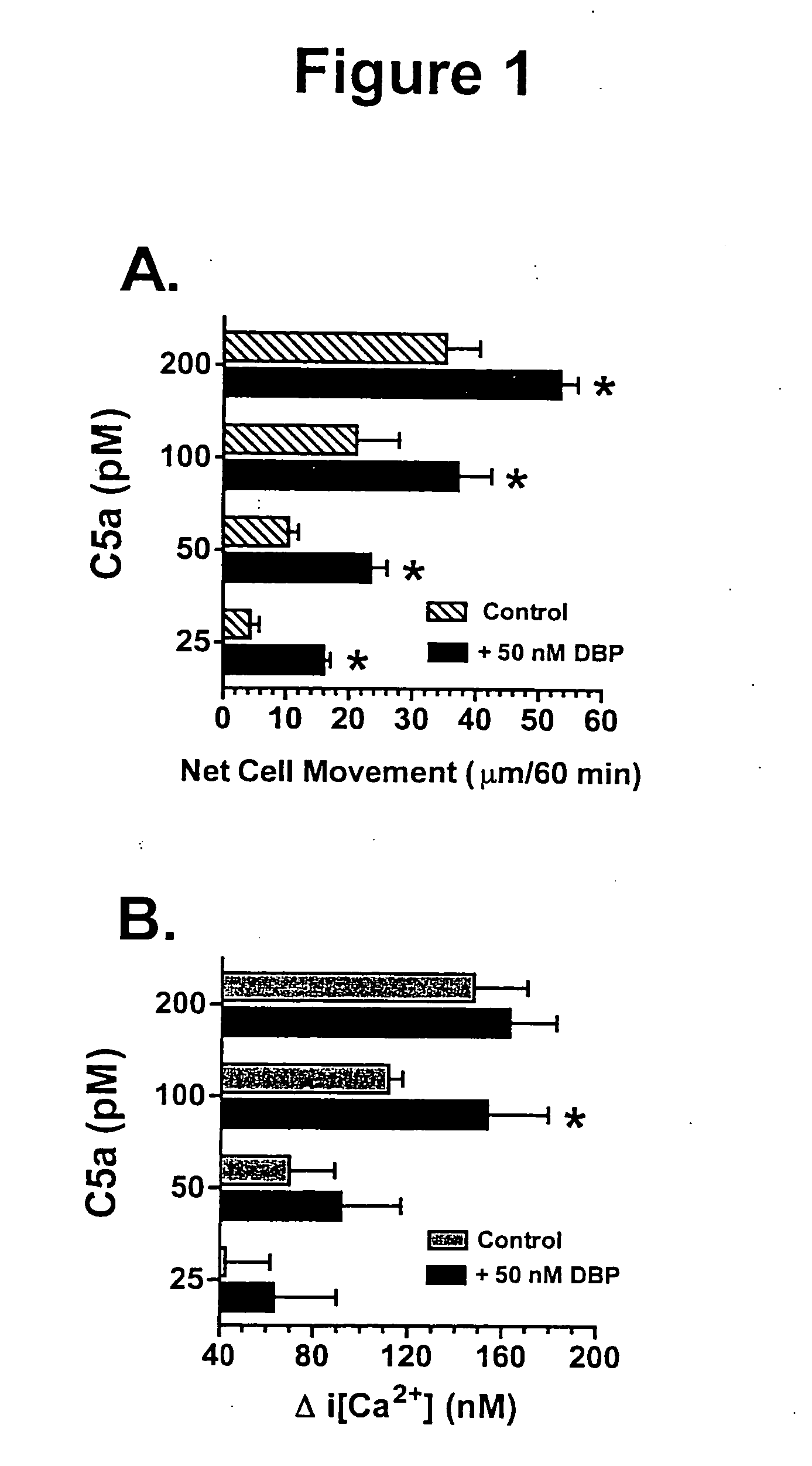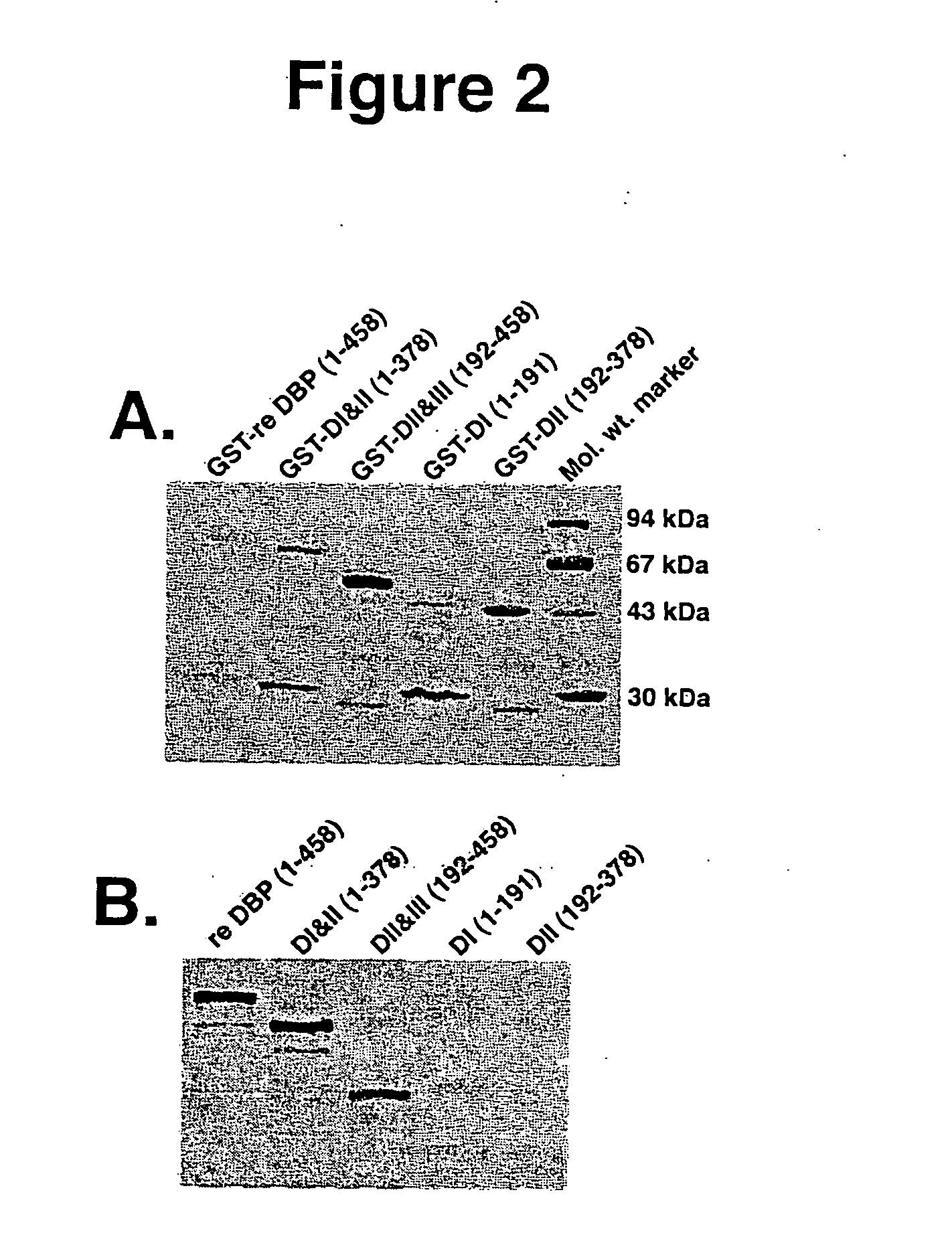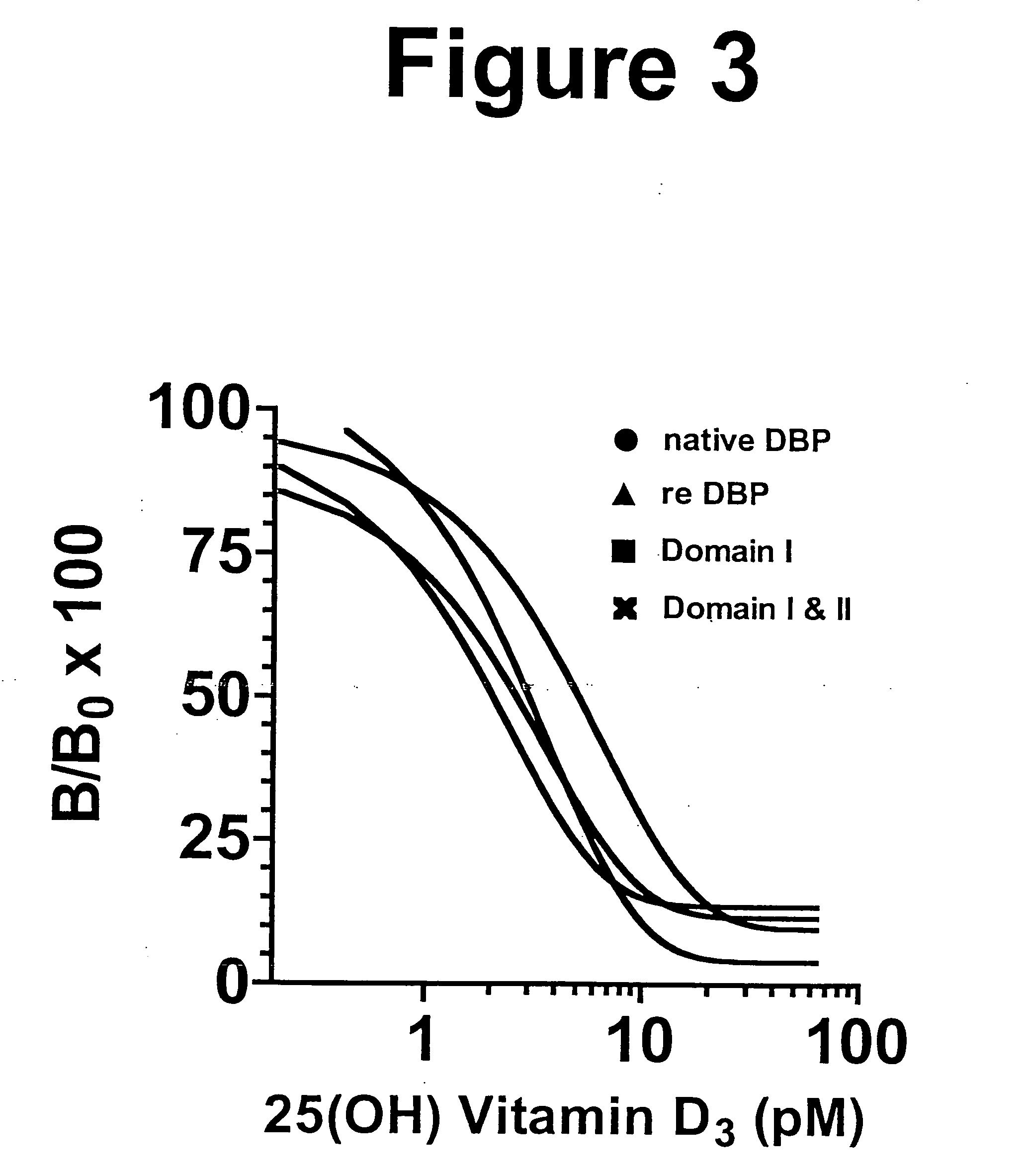Antagonist peptides to the C5A chemotactic function of vitamin D binding protein
a technology of c5a and dbp, which is applied in the field of protein and peptide chemistry, can solve the problems of little information available concerning this type of application, and the effect of dbp on the c5a-mediated increase in intracellular calcium concentrations has not been determined
- Summary
- Abstract
- Description
- Claims
- Application Information
AI Technical Summary
Benefits of technology
Problems solved by technology
Method used
Image
Examples
example 1
[0134] Materials and Methods
[0135] Reagents: Recombinant C5a was purchased from Sigma-Aldrich (St. Louis, Mo.). Purified human DBP was obtained from Biodesign International (Kennebunkport, Me.). Full-length human DBP cDNA (Gc-2 allele), clone number CS0DM004YF02, was purchased from Invitrogen (Carlsbad, Calif.). DNA restriction and modification enzymes were purchased from New England Biolabs (Beverley, Mass.). Oligonucleotides were synthesized by Invitrogen. Anti-human DBP was purchased from DiaSorin, (Stillwater, Minn.). pGEX4T-2 expression vector was purchased from Amersham BioSciences (Piscataway, N.J.). Dibutyryl-cAMP (Bt2cAMP), DMSO, and protease inhibitor cocktail mixture was obtained from Sigma-Aldrich. Complement-activated serum using yeast cell walls (zymosan A) was prepared as previously described (Trujillo, G., and Kew, R. R. J. Immunol. 173, 4130-4136 (2004)). DBP-derived peptides, a peptide corresponding to residues 130-152 (EAFRKDPKEYANQFMWEYSTNYG (SEQ ID NO: 3), and ...
example2
[0143] DBP enhancement of C5a-induced chemotaxis and Ca2+ influx in differentiated HL-60 cells. Previous published work in our lab has demonstrated that neutrophils coincubated with DBP display significant increased movement to suboptimal concentrations (10 to 100 pM) of C5a, i.e., the cochemotactic effect. However, neutrophils are short-lived, terminally differentiated cells and cannot be genetically manipulated. A cell culture model for neutrophils is the promyelocytic cell line HL-60 that can be induced to differentiate into neutrophil-like cells using agents such as DMSO or Bt2cAMP. Differentiation of HL-60 cells for 48 hours using 250 μM Bt2cAMP induced expression of the C5a receptor and permitted both chemotaxis to C5a alone and significantly enhanced movement to C5a in the presence of purified natural DBP (FIG. 1A). These results were consistent with previous reports of the present inventor using neutrophils and indicate that differentiated HL-60 cells will serve as a good ce...
example 3
[0145] Analysis of E. coli expressed DBP by SDS-PAGE and western blotting. The commercially available (Invitrogen) 1374-nucleotide DBP cDNA, Gc2 allele, was expressed in E. Coli BL-21 in the plasmid vector pGEX-4T-2 fused to GST. Upon IPTG induction, the GST-DBP fusion protein was expressed, as judged by SDS-PAGE (FIG. 2A). SDS-PAGE of the elution protein revealed an ˜80 kDa band corresponding to the molecular weight of full-length DBP fused to GST. The bands at ˜65 kDa, 55 kDa, 45 kDa correspond to the molecular weight of GST with truncated forms of DBP. All lanes have a small amount of a 30 kDa band. This probably represents degradation product of GST or the unfinished product of the protein synthesis. Thrombin-cleavage of the purified fusion protein resulted in separation of GST from DBP. The SDS-PAGE and immunoblotting after cleavage and separation of GST revealed a single protein band of 56 kDa for full-length DBP, 40 kDa for domains I & II, 30 kDa for domains II & III, and 20 ...
PUM
| Property | Measurement | Unit |
|---|---|---|
| Composition | aaaaa | aaaaa |
Abstract
Description
Claims
Application Information
 Login to View More
Login to View More - R&D
- Intellectual Property
- Life Sciences
- Materials
- Tech Scout
- Unparalleled Data Quality
- Higher Quality Content
- 60% Fewer Hallucinations
Browse by: Latest US Patents, China's latest patents, Technical Efficacy Thesaurus, Application Domain, Technology Topic, Popular Technical Reports.
© 2025 PatSnap. All rights reserved.Legal|Privacy policy|Modern Slavery Act Transparency Statement|Sitemap|About US| Contact US: help@patsnap.com



